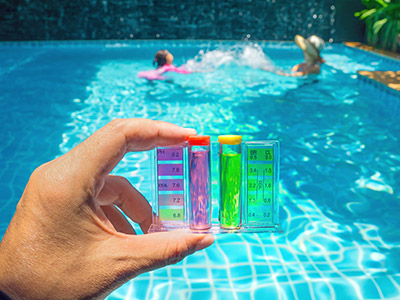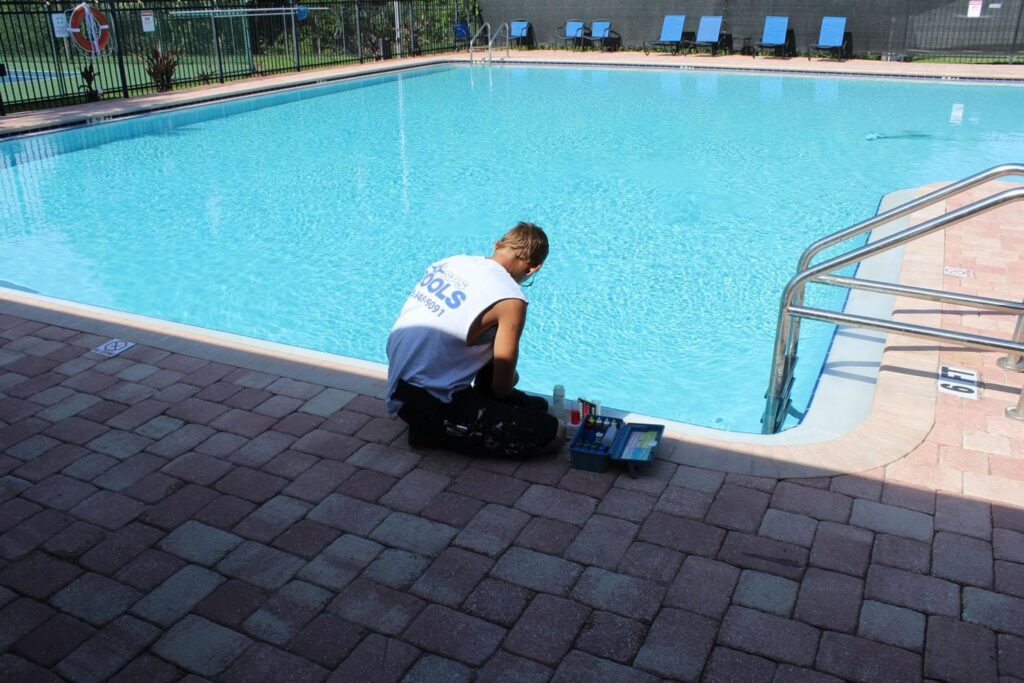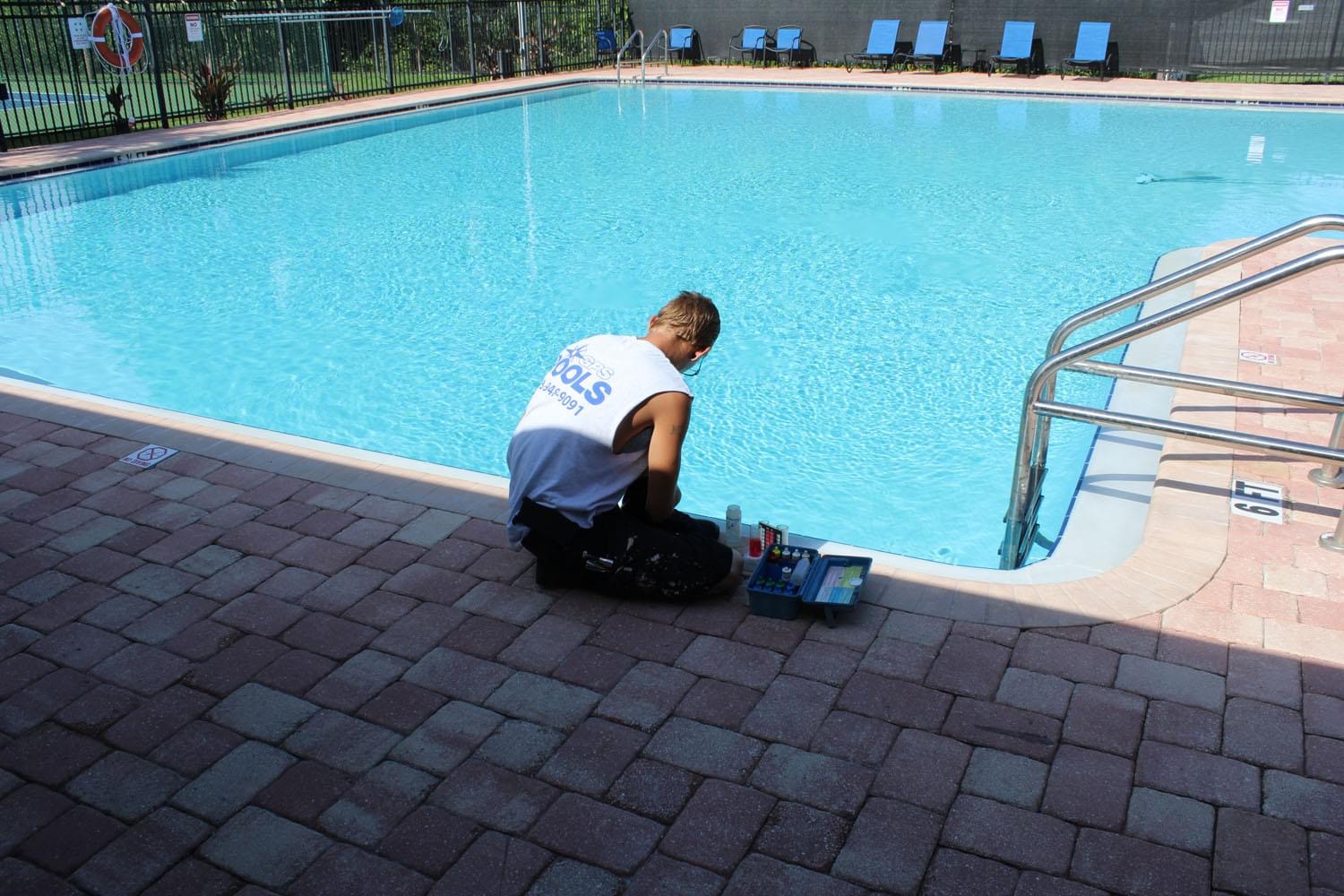How Much Chlorine to Add to Your Pool?
Burning eyes and a chemically clean smell fill most of our childhood memories. From swimming in city pools to that one friend who had an in-ground pool, chlorine is ever-present.
Unless you’ve switched to saltwater, you’re using chlorine in your pool. As an antimicrobial agent, a few cheaper, more effective methods are available. Chlorine kills nearly every bacteria, microbe, and pathogen around.
Preparing your pool for the swimming season doesn’t have to be a puzzle. With the right information, you can maintain your pool’s chlorine easily. Check out our tips and tricks for the perfect chlorine levels. Swim on!
Factors that affect how much chlorine you should add to a pool
Adding chlorine is a simple proposition. Knowing the correct amount is trickier. Several factors affect how much you need. These include the size and location of your pool, the weather, and the type of chlorine you’re putting in.
What type of chlorine should you be using?
There are two main types of chlorine tablets, stabilized and unstabilized. Then, you’ve got different forms, liquid, and solid, tablets and granules. Before your eyes glaze over, it’s very easy to choose.

Stabilized chlorine is protected from the sun’s UV rays by cyanuric acid (CyA). For outdoor pools, it’s the only option. Without CyA, the chlorine breaks down much sooner and isn’t as effective against microbes. Indoor pools may also use this type of chemical.
Unstabilized chlorine doesn’t contain CyA and isn’t suitable for outdoor use.
The form, solid or liquid, has more to do with convenience than anything else. Solid chlorine, sodium hypochlorite, is the best and dissolves slowly in water and maintains levels more consistently. Liquid chlorine, calcium hypochlorite, is messy and dangerous when improperly handled.
How large is your pool?
Deciding how much chlorine to use depends on the size of your pool. You’re aiming for between one and five parts per million (ppm) for safe swimming. Anything less won’t do the job; anything more may cause that burning sensation from your childhood.
There is a formula if you don’t know how much water your pool holds. Measure how long and how wide your pool is. Average the depth of the pool and then multiply by 7.5. This will give you the volume of water in your pool.
Using solid tablets is a convenient way to chlorinate your pool. Figure one tablet for every 5,000 gallons of water. Chlorine granules are another option, but they dissolve much quicker and are more expensive because they require daily application.
What should the pH levels be for your pool?
The trick here is to balance the ability of chlorine to kill the bad guys with safe water to swim in. Between 7 and 7.6 pH is the ideal balance. Higher than 8 on the scale, and you’re risking rashes from the water. Anything lower, and you’ll have burning eyes.
Use pH test strips to monitor your swimming pool water’s chlorine levels.
Does the weather affect the amount of chlorine added to your pool?
Because chlorine breaks down in the presence of UV rays, you’ll need to keep that in mind when adding it to your pool. Rainy weather may also affect the levels by diluting how much chlorine remains in your pool water.
If things get out of hand, you may need a pool shock. This process adds a higher level of chlorine to balance things out.
Test your levels regularly, or have a pool maintenance expert do it.
The different ways to put in your chlorine for your pool
Several methods for chlorinating your pool are on the market. These are the tried and true ways to put chlorine in your pool, from low-tech to high-tech.
A floating chlorine dispenser is a reliable tool

Floating dispensers are a common sight in neighborhood swimming pools. They’re easy to load with tablets and keep water levels consistently chlorinated.
One drawback is that they can’t spread the pool chemicals as quickly. Some auto-chlorinators use the power of the pool filter for a more even application.
Pool skimmers are under contention
Those little baskets built into the side of your pool are an effective way to get chlorine spread throughout. Add the correct amount of chlorine to your skimmers, and you’re good to go! Untreated water is pulled through the filter, and treated water returns through the jets.
One drawback is that they require your filter to run all the time to do their job. Some lower energy options save you money in the long run. However, it’s a toss-up in overall savings.
Contact a pool maintenance service
Call a pool service if it’s too much math and science for you. They’ll be able to recommend the best application for your needs and do all the heavy lifting! Contract for a check-up before pool season or have them come weekly. It’s up to you.
GPS Pools is here to help you answer any questions you have about your pool!
Clean water is nothing to joke about, and proper chlorination is a must. At GPS Pools, our experts can answer all your chemical questions and set you up right! With several locations around the Tampa area, we can be on-site quickly for all your pool service needs.
Check out our website and locations to see how we can ensure your summer plans are secured!

